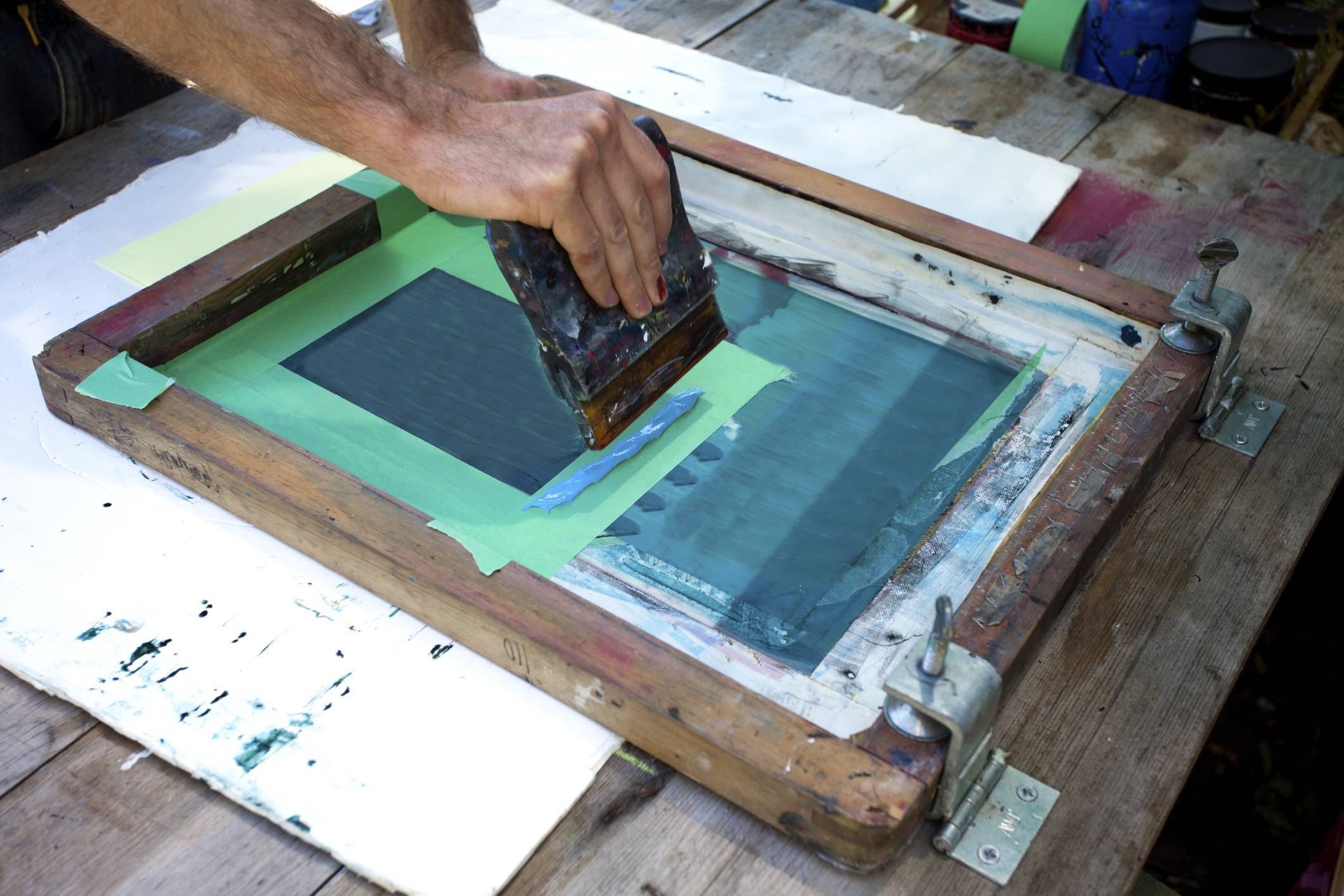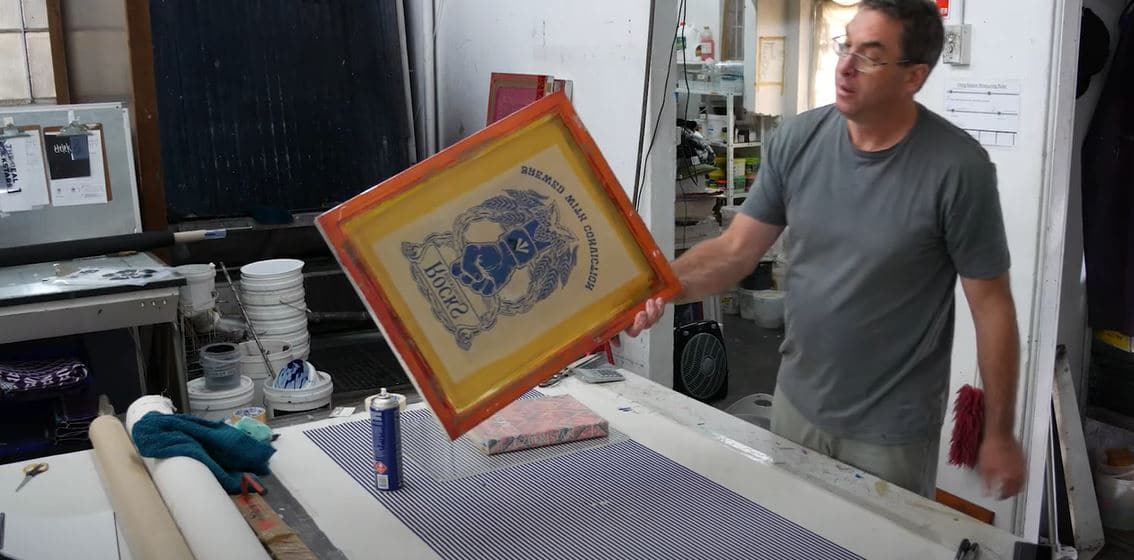ChatGPT said: How to customize your apparel with 10:9 Design Screen Printing in quick turnaround
The Vital Guide to Comprehending Screen Printing and Its Versatile Utilizes
Screen printing has a rich history that dates back to old times, evolving into a sophisticated strategy made use of throughout numerous sectors today. This overview discovers the details of the screen printing procedure, describing its applications in style, advertising, and home design - 10:9 Design LLC Company. Understanding these principles can open innovative potential for both creative and commercial tasks. The complying with sections will disclose necessary ideas and techniques to enhance one's screen printing undertakings
The Background of Screen Printing
Screen printing has origins that map back centuries, its evolution reflects the imaginative and technical improvements of numerous cultures. Coming from old China, the technique was initially utilized for decorating fabrics and later infect Japan, where it became integral to Ukiyo-e woodblock printing. The approach moved to Europe in the 18th century, where it acquired popularity amongst artisans and business printers. The creation of picture emulsion in the 20th century revolutionized screen printing, allowing for even more detailed styles and higher effectiveness. Artists like Andy Warhol additionally moved its appeal, using the tool to produce iconic jobs that combined commercialism and art. By the late 20th century, screen printing had actually developed itself as a versatile strategy, used in vogue, marketing, and art. Today, it continues to advance, integrating digital technology and broadening its applications across different sectors.
The Screen Printing Refine Explained
Screen printing changes imaginative visions right into substantial layouts via a collection of specific actions. A photo is developed and after that moved onto a screen, commonly made of great mesh textile extended over a structure. A light-sensitive solution is put on the screen, which is revealed to light, setting in locations not covered by the photo. After washing out the unhardened emulsion, a stencil is created.
Next off, the screen is put over the substrate, whether it be material, paper, or one more product. Ink is after that pressed with the open locations of the pattern making use of a squeegee, depositing the design onto the substratum listed below. This process can be duplicated for several colors, needing separate displays for each and every hue. The published thing is healed utilizing heat to guarantee the ink sticks effectively, resulting in a long lasting, lively design all set for usage.
Sorts Of Screen Printing Techniques

In addition, specialized strategies, such as discharge screen printing, remove dye from the fabric to develop softer prints, while aluminum foil screen printing applies metallic aluminum foil to attain a shiny finish (10:9 Design LLC Company). Each technique offers distinctive features, providing to different creative demands and production ranges, eventually expanding the opportunities within the screen printing domain
Applications of Screen Printing in Various Industries

Furthermore, the signage and marketing markets utilize screen printing for creating captivating screens and banners. This technique enables for strong colors and elaborate styles that capture focus. In electronic devices, screen printing is utilized for applying conductive inks to circuit card, important for component links. In addition, the home décor market embraces screen printing to generate unique layouts on fabrics and wall art. Overall, screen printing functions as a critical device across diverse areas, boosting items with personalized and visually enticing graphics.
Tips for Successful Screen Printing Projects
While undertaking a screen printing job, mindful interest to detail can considerably improve the last end result. Choosing high-grade products is necessary; this includes the screen, inks, and substratums. Utilizing appropriate mesh matters can influence ink deposition and detail resolution. Preparation is similarly crucial; detailed cleaning of screens and proper exposure times guarantee crisp prints.
Next, precise registration is important for multi-color prints. Making use of placement tools can help achieve precise layering. Additionally, testing prints on scrap materials prior to production assists determine possible problems without losing sources.

Often Asked Inquiries
What Products Are Best for Screen Printing on Material?
Cotton and polyester blends are ideal for screen printing on fabric because of their longevity and ink absorption. Additionally, specialty textiles like silk or canvas can generate distinct appearances and coatings, enhancing the general layout quality.
Exactly how Do I Tidy and Maintain Screen Printing Tools?
To cleanse and maintain screen printing equipment, one ought to consistently wash displays with ideal solvents, inspect squeegees for wear, lube moving parts, and shop all things in a dry, dust-free atmosphere to prolong their life expectancy.
What Are the Ecological Impacts of Screen Printing?
Screen printing can have considerable ecological influences, including chemical waste from solvents and inks, water use throughout cleansing procedures, and energy usage. Lasting methods and green products are crucial for decreasing these adverse impacts.
Can Screen Printing Be Done in the house Successfully?
Screen printing can be properly done at home with the appropriate products and methods. Hobbyists can produce top quality prints, though success depends upon their skill degree, tools, and understanding of the procedure included.
What Are the Costs Related To Starting a Screen Printing Organization?

Starting a screen printing organization includes prices for devices, products, and work area. Preliminary costs usually vary from a few hundred to numerous thousand dollars, relying on the scale, high quality of equipment, and desired manufacturing capacity.
Screen printing has a rich background that dates back to old times, progressing right into a sophisticated method used across numerous sectors today. One more strategy, rotary screen printing, utilizes round screens, promoting continuous printing on material rolls, thereby improving efficiency for massive productions. Additionally, specialized strategies, such as discharge screen printing, remove dye from the textile to produce softer prints, while foil screen printing uses metal foil to accomplish a glossy coating. In the style sector, screen printing is commonly utilized to develop vibrant designs on clothing, making it possible for brands to showcase their distinct designs. Cotton and polyester blends are excellent for screen printing on fabric due to their sturdiness and ink absorption.